NOTE: I have updated this 2016 post in order to make it appear closer to the other mason bee information
Some images from this month’s activity of mason bees:

NOTE: I have updated this 2016 post in order to make it appear closer to the other mason bee information
Some images from this month’s activity of mason bees:

NOTE: I have updated this 2016 post in order to make it appear closer to the other mason bee information
The warm sun encouraged a lot of activity around the Osmia lignaria boxes today .
NOTE: I have updated this 2016 post in order to make it appear closer to the other mason bee information
The time to put out your mason bees which have been overwintered in your refrigerator is when you need them to do their work. I release mine in batches. The first batch was several weeks ago when the peaches and nectarines were in bloom. This week, the pears, plums and cherries are in bloom so I just put out another batch of cocoons near my bee homes. I will save the last batch for my apple trees which bloom later.
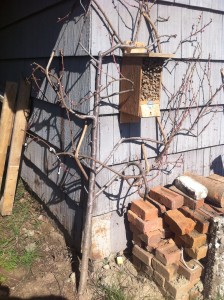 I had to transplant this peach tree this year to the corner of the vegetable preparation building so I found another good spot to place a bee home.
I had to transplant this peach tree this year to the corner of the vegetable preparation building so I found another good spot to place a bee home.
NOTE: I have updated this 2016 post in order to make it appear closer to the other mason bee information.
Don’t forget to make sure that your mason bees can find a good source of mud while they are laying their eggs in your tubes. I discovered a year ago that if you provide a reliable source within a few metres of the bee houses, they will use less energy to gather mud and will therefore be more efficient.
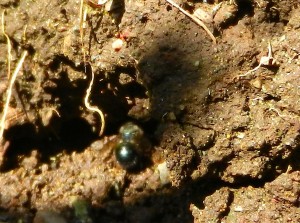
See this post I did. Another observation has led me to believe that they prefer to collect mud in horizontal holes in the side of a trench. This trench is kept wet throughout the nest-building period, and I dig holes into the walls of the trench. It is probably an adaptation to prevent predation, as they would be easy targets on an open patch of wet soil. They also prefer “clayish ” mud, as any good mason knows that their mud needs to be sticky… Sandy doesn’t do it!
This year I gathered some freshly exposed clay and added it to my mud trench.
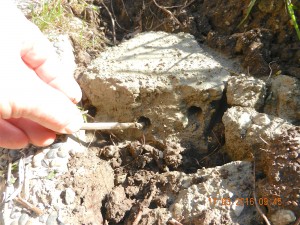
NOTE: I have updated this 2015 post in order to make it appear closer to the other mason bee information
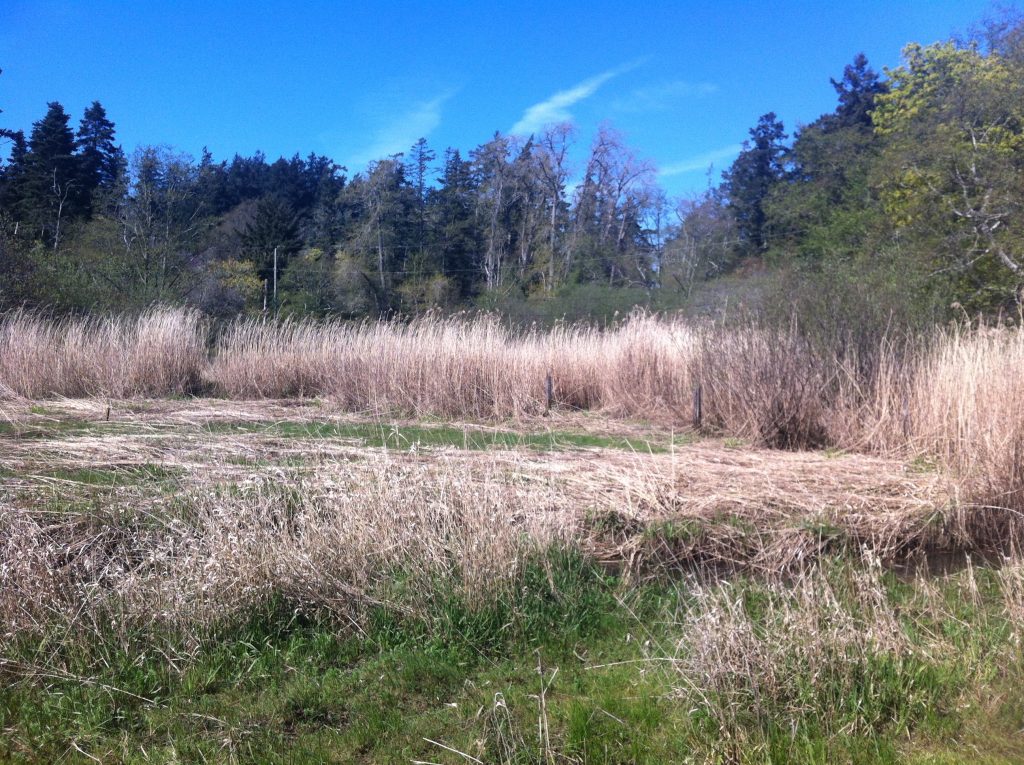
(http://metchosinmarine.ca/gf/triglochin-maritima/)
Once the temperatures are up on sunny days, cocoons placed out near their prospective homes will start cutting their way out of the cocoons and fly off to get materials to fill their own tubes for the coming year. If there are remaining cocoons unopened after a week and a half of warm weather, then it may be worthwhile to check them for parasites. You can open a cocoon with a sharp box-cutter blade, carefully picking away at the tough cocoon. If the bees are healthy they will leave within a few minutes. You may encounter the following parasites and if so you should get rid of them. I have included some here that I not quite sure about as well. These parasites are natural, but when, as with many monocultures we concentrate many of one species together, the chance of pests finding a good place to thrive is increased.
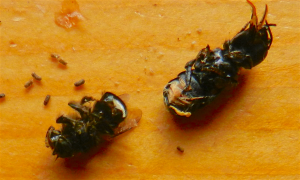
NOTE: I have updated this 2015 post in order to make it appear closer to the other mason bee information
I will use this page to mount pictures sent back by customers who have made their own houses out of recycled materials or have set up experiments to test the materials.
There are various values in the commercial community in regards to increasing the presence of Mason Bees as pollinators. Some items for growing Mason bees currently on the market tend to appeal more to the human than the bee, and people are willing to pay for these.
However in order to increase the populations of Mason Bees for our interests in pollination of our plants, more emphasis could be placed on providing homes that bees find favourable for their sole purpose: that of increasing their progeny.
At recent “Seedy Saturday” events, I have been encouraging people to use recycled materials to build houses and then to send back pictures of what type of structure they have come up with. Below are a few examples for a start.
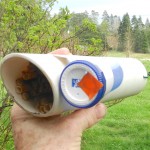
I do have available for sale several of these 2 inch water pipes with 2 dozen + tubes inside for $15.00.
NOTE: I have updated this 2016 post in order to make it appear closer to the other mason bee information
ARCHIVAL: This post has been re-dated from 2016 in order to position it closer in the blog to Mason Bee Information
Well thats a takeoff on what I have decided to call my Mason Bee operation.. Its now MASON BEES METCHOSIN. Below are the latest versions of a poster and simplified yearly directions I have on a business card.
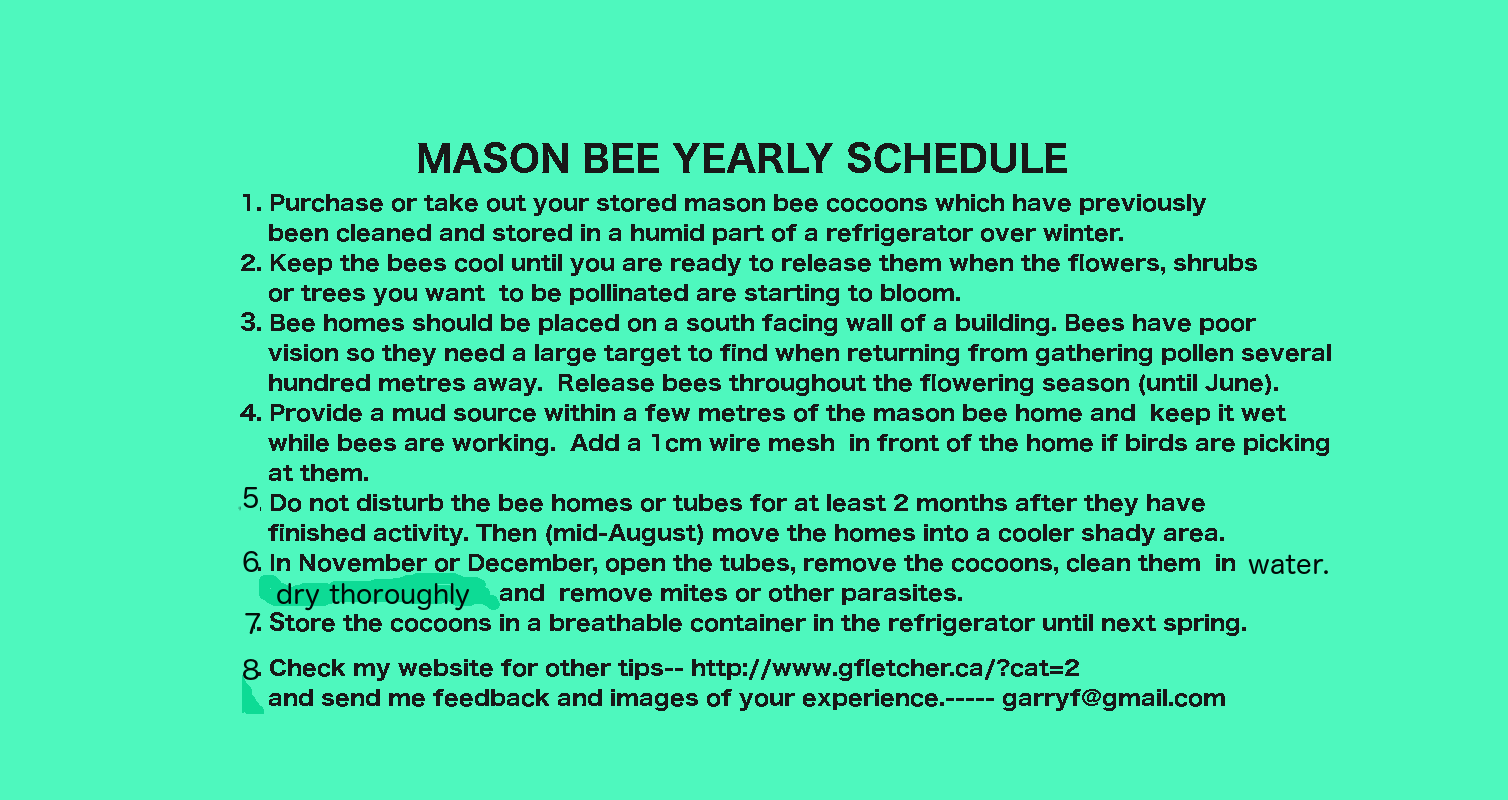 Scroll back through the mason bee postings to see samples of houses made from repurposed/recycled materials.
Scroll back through the mason bee postings to see samples of houses made from repurposed/recycled materials.
Note: I have created this 2017 posting to bring it closer to the other mason Bee information